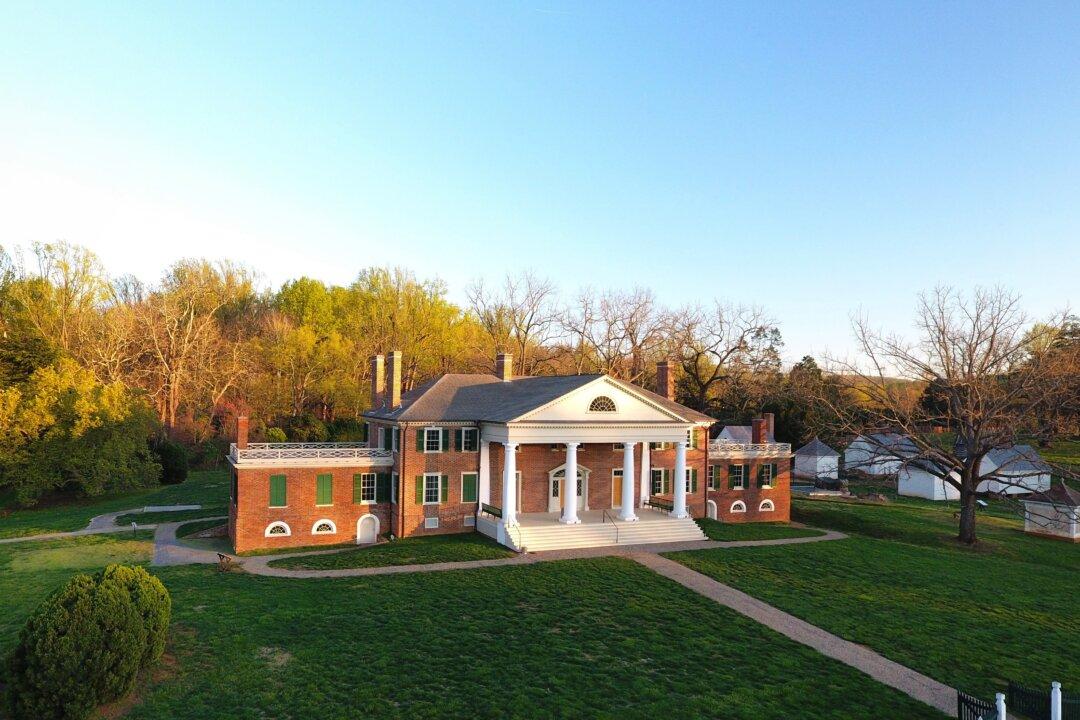Montpelier, the lifelong plantation-style home of James Madison, founding father, diplomat, and fourth president of the United States, has as rich and varied a history as the man who made it famous.
The property of the National Historic Landmark, which covers over 2,600 acres, belonged to the Madison family as early as the 1720s. When James Madison was born in 1751, he came home to a much smaller house located about a half-mile from where Montpelier currently sits. Madison’s father is thought to have built the earliest part of the present house in the 1760s, and when the family moved in, the Georgian-style home was the largest residence in Orange County.





